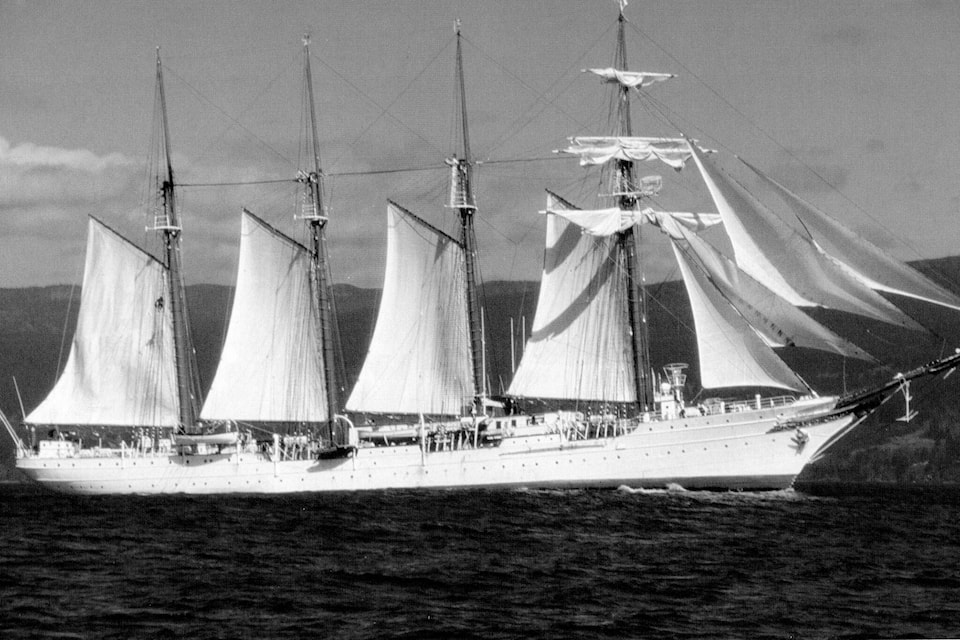Elida Peers | Contributed
Imagine my surprise when I picked up a copy of National Geographic and saw this headline: “First Around the World – Elcano Completes Magellan’s Quest.” Sooke’s exciting experience with the Spanish sailing vessel Juan Sebastian de Elcano was in March 1991, and this was a new piece of information.
Those who participated in the welcome to the Elcano in 1991 gathered at Whiffin Spit to wave and cheer as the vessel, too large to round Whiffin Spit and enter Sooke harbour, fired a 21-gun salute as its formal greeting on entering British Columbia waters.
The vessel proceeded to anchor at Royal Roads, where the ship got spruced up from the rigours of its journey here from Hawaii before it went on to Victoria and berthed at Ogden Point.
The reason we were honoured with this visit from Spain’s pride of the fleet, the four-masted topsail schooner, carrying 360 feet of canvas, was that the ship’s captain, Pedro La Pique, was a cousin to Spain’s Ambassador Antonio Fournier, who had become our friend the year before when we celebrated the bicentennial.
In traditional Sooke style, the folks of our community hosted the ship’s 300 cadets in Sooke Community Hall before Victoria’s official welcoming ceremonies. The officers and cadets were thrilled with the barbecued salmon and the logging sports show.
Bob Hudson, a maritime aficionado, recalls: “It was such an exciting time. We were so proud of Sooke, as all of us volunteers worked together to host them, and they presented us with the bust of Manuel Quimper that you see at Whiffin Spit.”
The historical fact that we now learn was that the ship’s name came from a 16th-century mariner called Juan Sebastian Elcano. Long before fur seals became a sought-after seagoing target, mariners from European nations would set sail in quest of the Spice Islands. In that era, the bounty of newly found exotic spices, especially cloves, lured mariners to compete in finding the best trade routes.
Born on Spain’s Atlantic coast in 1476, Juan Sebastian Elcano grew up to have an illustrious career and, in 1519, became the second officer of Ferdinand Magellan’s ship Conception in his journey westward. The convoy of vessels was plagued with misfortune, including hunger, scurvy, mutiny and even murder.
Ultimately, Magellan met his end in the Philippines, and Elcano took command and brought what remained of the vessel and crew back to Spain, completing the first circumnavigation of the world in 1522.
Sadly, in 1525, on another journey planning to revisit the Spice Islands, Elcano died of scurvy.
•••
Elida Peers is the historian of the Sooke Region Museum. Email historian@sookeregionmuseum.com.
editor@sookenewsmirror.com
Like us on Facebook and follow us on Twitter
